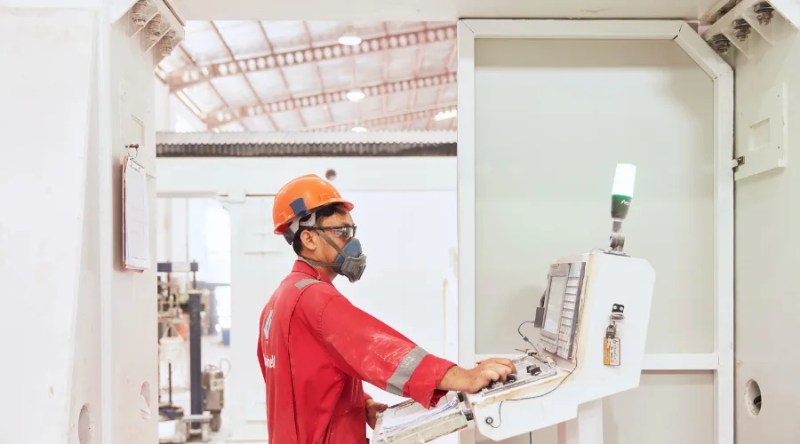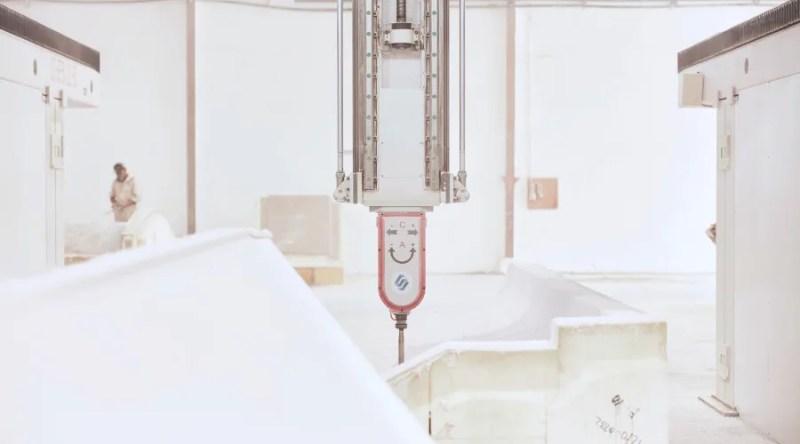The landscape of contemporary architecture is undergoing a profound transformation, moving beyond the rectilinear and embracing curves, intricate patterns, and bespoke forms. This shift is not merely an aesthetic preference; it is fundamentally enabled by advanced manufacturing technologies, with Computer Numerical Control (CNC) machining at the forefront. CNC technology has become an indispensable tool for architects and building consultants, allowing for the precise and efficient realisation of complex designs that were once considered unfeasible.
The Evolution of Architectural Expression
Historically, architectural forms were constrained by the limitations of traditional construction methods and the manual skills of craftspeople. While artisans achieved remarkable feats, the reproduction of highly complex or irregular geometries on a large scale remained a significant challenge. The advent of digital design tools, such as CAD and BIM software, opened up new possibilities for conceptualisation, but the bridge between digital design and physical construction often remained difficult to traverse.
CNC machining has provided the crucial link, translating digital models directly into tangible forms with unprecedented accuracy. This direct digital-to-fabrication workflow eliminates many of the manual steps prone to error, enabling architects to explore and implement highly nuanced designs. From intricate façade panels to flowing interior elements and sculptural public art installations, CNC technology empowers a new era of architectural expression, where imagination is less constrained by manufacturing limitations.

Understanding CNC in Architecture
At its core, CNC machining involves the automated control of machine tools (like routers, mills, and laser cutters) by computers. The machine interprets digital design files, typically generated from 3D models, and executes precise movements to cut, shape, or engrave materials. For architectural applications, multi-axis CNC machines are particularly significant. A 5-axis CNC machine, for example, can move a cutting tool along five different axes simultaneously, allowing for the creation of highly complex, three-dimensional forms with undercuts and compound curves that would be impossible with simpler machines.
The benefits of applying CNC in architectural fabrication are numerous:
- Precision and Accuracy: CNC machines can achieve tolerances far beyond manual capabilities, ensuring that each fabricated component precisely matches the digital design. This precision is critical for seamless assembly and the structural integrity of complex architectural elements.
- Design Freedom: The ability to translate any digital geometry into a physical form liberates architects from conventional constraints. This fosters innovation in design, allowing for the exploration of organic shapes, intricate patterns, and unique building envelopes.
- Efficiency and Speed: Once a design file is finalised, CNC machines can operate continuously, producing multiple identical or varied components quickly and efficiently. This significantly reduces fabrication time and labour costs compared to traditional methods.
- Material Versatility: CNC technology can be applied to a wide array of materials commonly used in architecture, including timber, metals, plastics, and advanced reinforced materials. This versatility allows architects to select materials based on their aesthetic, structural, and environmental properties.
- Waste Reduction: Through optimised nesting and cutting paths, CNC machines can minimise material waste, contributing to more sustainable construction practices.

Advanced Materials and CNC Fabrication: A Symbiotic Relationship
The true potential of CNC in contemporary architecture is fully realised when paired with advanced, high-performance materials. These materials, often lightweight yet incredibly strong, can be precisely manipulated by CNC machines to create innovative building elements. ShapeShift Technologies has been at the forefront of this integration, utilising 5-axis large-format CNC machines to fabricate bespoke geometries from a range of reinforced materials.
The ability of 5-axis CNC machines to create detailed tooling for reinforced material enables architects to specify complex, customised forms without compromising structural performance. This includes curved panels, sculptural elements, and intricate patterns that seamlessly integrate into a building’s design. ShapeShift Technologies also offers a Green GRC option, which incorporates recycled glass content, further enhancing the material’s environmental profile by eliminating crystalline silica and improving mechanical properties. The precision of CNC ensures that these GRC elements, whether standard or bespoke, maintain tight dimensional and angular tolerances as outlined in the ShapeShell™-RC Technical Data Sheet.
The fabrication process for ShapeShell™-RT often involves advanced vacuum infusion techniques, which ensure uniform consistency and enhanced performance through optimised resin flow. When combined with 5-axis CNC machining, ShapeShell™-RT can be precisely shaped into highly customised and structurally efficient components that are resistant to corrosion, weathering, and chemicals. The Moondani Balluk project, for example, utilised ShapeShell™-RT for custom façade planters featuring bespoke mural artwork, demonstrating the material’s versatility and the precision afforded by CNC fabrication in achieving complex, integrated design solutions. The Orbis façade project also highlights the suitability of ShapeShell™-RT (alongside ShapeShell™-RC) for lightweight, structurally efficient façade systems with customisable geometries and advanced coatings, including PVDF.
Case Studies: CNC in Action
The practical application of CNC technology in contemporary architectural projects demonstrates its transformative impact.
Blacktown Exercise Sports and Technology Hub: This project showcases how CNC-fabricated elements can contribute to the creation of dynamic and high-performance architectural forms. The nature of such a modern facility suggests the use of advanced fabrication methods for its complex geometry and functional requirements.
The Orbis Façade: This project highlights the use of ShapeShell™-RT and ShapeShell™-RC for a façade system designed for architectural expression and robust technical performance. The contract scope included design, fabrication, and installation, with a strong emphasis on accommodating structural movement, fire resistance, airtightness, and long-term durability. The implication is that CNC fabrication was instrumental in producing the lightweight, structurally efficient façade panels with customisable geometries, ensuring that the system met stringent performance certifications and accommodated on-site adjustability of ±20mm.
These projects underscore the capacity of CNC machining to deliver intricate, high-performance building components that meet both aesthetic aspirations and rigorous technical specifications.
The Future of Architectural Fabrication
The trajectory of CNC technology in architecture points towards even greater sophistication and integration. We can anticipate:
- Increased Automation and Robotics: Further integration of robotic arms with CNC machines will enable even more fluid and complex fabrication processes, potentially leading to on-site robotic fabrication.
- Parametric Design Integration: The seamless connection between parametric design software and CNC machines will allow for rapid iteration and optimisation of designs, leading to more efficient and adaptable architectural solutions.
- New Material Exploration: As material science advances, new high-performance materials will emerge that are specifically engineered for CNC fabrication, pushing the boundaries of what is structurally and aesthetically possible.
- Sustainable Manufacturing: Continued focus on reducing waste and energy consumption in CNC processes, along with the use of recycled and sustainable materials, will align architectural fabrication with broader environmental goals.
- Customisation as Standard: As CNC becomes more accessible and efficient, bespoke architectural elements may become the norm rather than the exception, allowing for a higher degree of customisation in every project.
For architects and building consultants, understanding the capabilities of CNC technology is no longer optional; it is a fundamental aspect of contemporary practice. Engaging with companies like ShapeShift Technologies, which combine material innovation with advanced CNC fabrication, offers a pathway to realising ambitious and complex architectural visions.
Conclusion
CNC machining has profoundly reshaped contemporary architecture by bridging the gap between digital design and physical construction. It has enabled architects to move beyond conventional forms, embrace complexity, and create buildings that are not only aesthetically striking but also functionally superior and sustainably produced. The precision, efficiency, and design freedom offered by CNC technology, particularly when applied to advanced reinforced materials like ShapeShell™-RC, ShapeShell™-RG, and ShapeShell™-RT, continue to push the boundaries of what is achievable in the built environment. As the technology evolves, its role in shaping the future of architecture will only become more central, offering exciting new possibilities for innovation and expression






